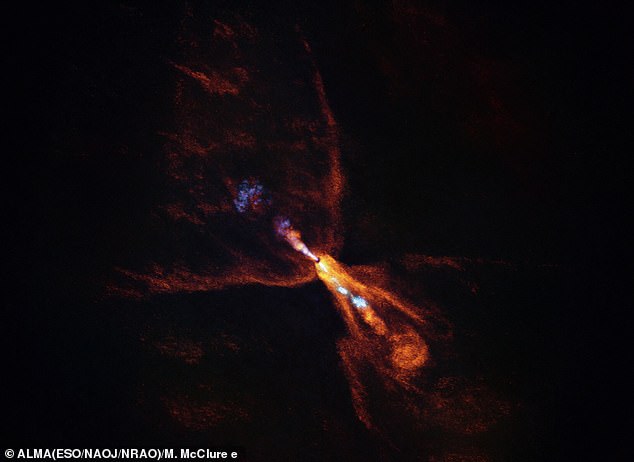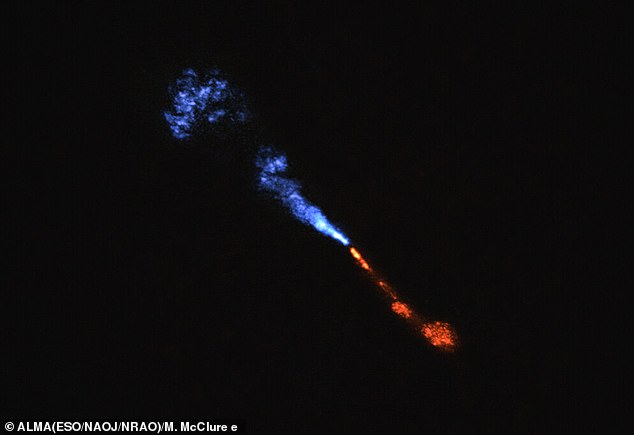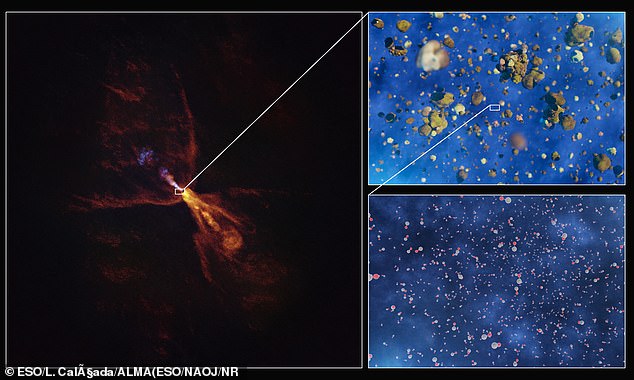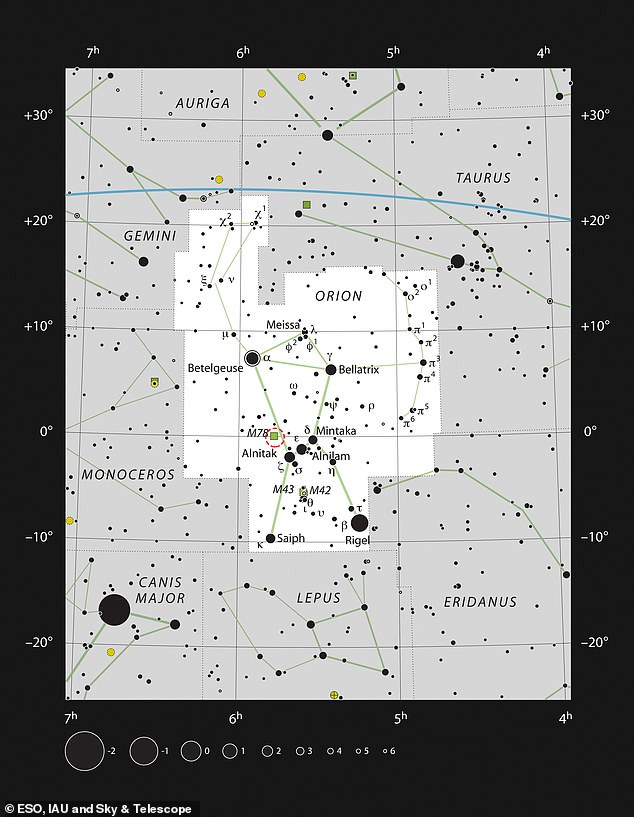Scientists have captured the birth of a new solar system for the very first time.
These incredible images reveal the exact moment when planets began to form around a star 1,300 light-years from Earth.
Located within the constellation Orion, the ‘baby’ proto-star HOPS-315 is surrounded by a ring of hot minerals that are only just starting to clump together.
Scientists say these cosmic baby photos are just like what our own Sun would have looked like over four billion years ago.
Lead author Professor Melissa McClure, an astronomer at Leiden University, told MailOnline: ‘The star has disc and stellar properties that are very similar to what was expected for the Sun at only 100,000 years old.
‘So it provides a snapshot of what the Sun might have looked like in its infancy.’
Scientists believe that planets emerge from structures called protoplanetary discs – spinning wheels of hot matter that form around young stars.
Now, using the James Webb Space Telescope and the ALMA telescope in Chile, scientists have finally been able to see what this process looks like.

The stunning pictures show the exact moment that planets began to form around a star 1,300 light-years away from Earth

This image shows jets of silicon monoxide (SiO) blowing away from the baby star HOPS-315. This material is what formed the first building blocks of planets in the solar system. Astronomers found that it is located in a small area around the star, about the size of the asteroid belt
Astronomers often spot protoplanetary discs swirling around young stars or find discs that contain newborn, massive, Jupiter-like planets.
However, the exact moment that planets start to condense has remained elusive.
Within our own solar system, the very first material to condense near where the Earth currently orbits is trapped inside ancient meteorites.
By analysing these fragments of the early solar system when they fall to Earth, scientists know that they are packed with minerals rich in the chemical silicon monoxide.
Since this chemical only condenses in the super-hot conditions of a young protoplanetary disk, its presence is a key sign of planetary formation.
The first kilometre-sized ‘planetesimals’ (the tiny building blocks of planets), in the solar system formed just after these crystalline minerals started to condense.
However, this moment, known as the “t=0” point, has never been seen because young stars are usually shrouded in an envelope of cold gas.
But by finding a star system with ‘just the right geometry’, the researchers were able to peer through this thick cocoon and see the planetary disk inside.

Scientists found that a key chemical around HOPS-315 is now in the form of both a gas (bottom) and a solid crystal (top). This is the ‘smoking gun’ that the process of planetary formation is just starting

Located within the constellation Orion, the star HOPS-315 (circled in red) is just 100,000 years old. This makes it just a ‘baby’ star compared to others in the galaxy
The signals of silicon monoxide were first detected around HOPS-315 by the James Webb Space Telescope.
Researchers then used the ALMA telescope to work out exactly where those signals were coming from.
Importantly, in their paper, published today in Nature, Professor McClure and her co-authors show that the chemicals around HOPS-315 are just beginning to cool.
Professor McClure says: ‘We were able to detect cooling silicon monoxide gas and these same crystalline minerals around a young protostar that is 100,000-200,000 years old.’
The fact that the minerals are in both solid and gas states is a ‘smoking gun’ for this being the exact t=0 moment.
They determined that the chemical signals were coming from a small region of the disc.
This region was stretched in a ring around the star at a distance equivalent to where we find the asteroid belt in our solar system.
Co-author Dr Logan Francis, a researcher at Leiden University, says: ‘We’re really seeing these minerals at the same location in this extrasolar system as where we see them in asteroids in the Solar System.’
That similarity shows that HOPS-315 is undergoing a process of planet formation which is very similar to the one which produced Earth and all the other planets.
This means scientists can study HOPS-315 to learn more about how our own planet formed billions of years ago.
Co-author Professor Merel van ‘t Hoff, of Purdue University, says: ‘We’re seeing a system that looks like what our Solar System looked like when it was just beginning to form.
‘This system is one of the best that we know to actually probe some of the processes that happened in our Solar System.’












